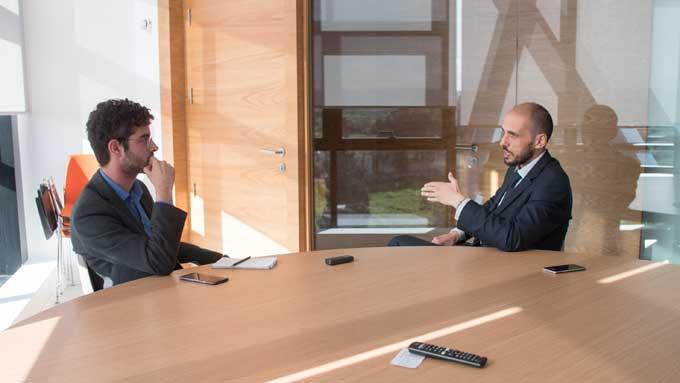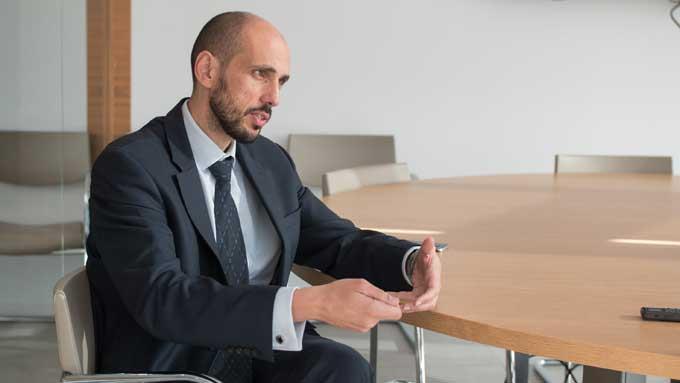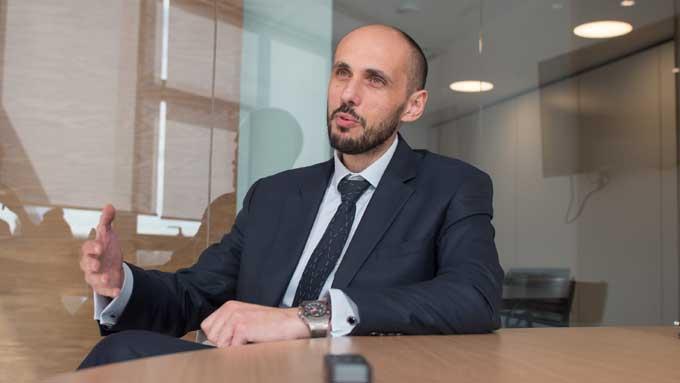A pound of salt
The word used to describe the action of exchanging one object - whatever it may be - for another is 'barter'. Progress in finance has facilitated the exchange of value to an automated process, but behind the scenes it has been a centuries' long process to get to where we are today.
Going back to Roman times, Wayne Pisani, Grant Thornton Malta partner and President of the Malta Institute of Financial Services Practitioners explains the importance of appreciating the evolutionary progress of money in order to truly understand the moving gears in today's payment system.
"Money is implicitly a means of facilitating the barter of value. The term 'salary' is indicative of the origin of money - derived as it is from the word 'salarium', the Latin for 'salt' - which was the medium of payment to Roman soldiers," he says.
Back then, soldiers were paid in salt and if they wanted to buy a simple cabbage, for example, they would need to find something of equal value that the seller needed in order to barter for that cabbage.
Meat would be a good example of this. Since electricity - and thus fridges - was centuries away from being discovered, it was more likely that butchers would need salt to preserve their meat. Assuming that the vegetable seller would have needed meat for a broth, soldiers would have had to go to the butcher and buy (barter) the meat with salt, and then buy (barter) the cabbage with that meat, unless the vegetable seller was willing to take the 'exchange' risk of accepting the salt based on an assumption that the butcher would have eventually agreed to barter the excess salt with its equivalent value in the meat he needed.
Pisani points out that whilst this made sense for bartering between parties and communities in reasonably immediate proximity, it became harder in a regional - and eventually globalised - economy.
Society then began to experience the evolution of commodity currency into minted units, the value of which was directly pegged to the commodity of which they were made - coins which represented their weight in whatever mineral they were made of.
After that came representative currency, reminiscent of the mediaeval banking system that would serve as a point of trust, tendering receipt for valuables such as art or gold.
"Trust shifted from a necessity-driven commodity such as salt, to a store of value commodity such as gold, to a receipt representing value issued by a single point of trust - the bank - run by affluent mediaeval families as the Medici's bank", said Pisani.

Fast-forward a few centuries and we experienced the decoupling of money from precious valuables, typically gold, when in - 1971 - the United States Treasury resolved that it would no longer be necessary for the US dollar to be backed by gold: fiat money. Fiat money in circulation is accepted as a valuable unit of exchange on the basis of the trust placed in the governmental system issuing the respective coins and bank notes denominated in currencies in legal tender, typically backed by the economy.
We went from commodity to representative to today's fiat money, currency that a government has declared to be legal tender. Today's fiat money relies on a central point of trust.
A cashless society
Moving onto the present and the potential future, Pisani shows how a public blockchain could possibly be a solution to do away with banks (the central points of trust). However, the concept of a cashless society is not contingent on blockchain. Money available on credit cards and debit cards is already in digital format without the use of blockchain.
"What is hindering us from moving to a cashless society is probably a cultural matter. I don't think it's a matter of trust," said Pisani.
Locally speaking, merchants might not be willing to accept cashless payments because the transactional charges in order for them to accept such payments dent their profit margin, so it is likely that they would not accept a card payment for anything lower than €10 or €5 euro.
Technology and regulation are making it possible to reduce these intermediary charges or commissions. "The consumer expects a secure, seamless automated payment experience, preferably with a small degree of human intervention to sign or input verification pin codes, where the payment is facilitated and packaged in software as a service (SaaS) format, a concept that is permeating the cashless society. Trust is placed in the system," he said.
Pisani reasoned that it is not a question of removing the point of trust, but a question of the trust point providing an easy to use, seamless and intuitive payment experience.
One world currency
"Theoretically speaking, it would make sense to have one common denominator as a currency," said Pisani. Money has three qualities: store of value, which means it is an asset that maintains its value without depreciating; unit of account, which means it has a nominal unit of currency used to represent the real value of any item (eg euro); and medium of exchange, which means it is an intermediary instrument used to facilitate barter.
"If we all agree that we are going to use one unit then, in theory, we do not need different currencies. A supranational body equivalent to the IMF or UN could potentially issue a globally accepted token over a blockchain.

"The reality is that society has evolved in so many directions that having one medium of exchange for all society is difficult; consider the difficulties faced in Europe to transition to the Euro. Hence, whilst theoretically possible, the problematic part of this would be the transitional process to a single accepted value-unit of exchange."
Pisani insisted that we should not wait for one unit of account that would facilitate exchange of value for the whole world if we want to move closer to a cashless society. The answer lies in facilitating the exchange of value in whichever medium and units it is represented.
Government steps in
"Personally, I think that the solution is quite simple: pull out all money in paper format and issue it in digital format," said Pisani, and according to him, this process is already in motion. This is particularly the case in smaller countries or those countries that are in control of their currency, as is the case of Uruguay, where Uruguay's Central Bank issues digital notes rather than printing bank notes.
If we look back at the 1990s, and the advent of online commerce and the need to make electronic payments to buy something off the internet, we may recall the quest to figure out an online payment solution. It was not easy to use one's debit or credit card online. An electronic wallet solution was needed: PayPal possibly being the widely accepted precursor to today's electronic money issuers, payment services providers and online banks.
The money available through a debit or credit card is nothing more than dematerialised fiat money loaded onto a magnetic or chip card, or stored in an electronic wallet: a digital representation of value called 'electronic money' - currency that a government has declared to be legal tender.
The aspect which is strange today, Pisani thinks, is that money starts off with being material and then we dematerialise it. "If a central authority or bank were to resolve that more money in circulation ought to be issued, instead of printing bank notes or minting coins, it should just be a matter of issuing them in tamper-proof digital format which we would trust, exchanging value in digital money units."
Society is used to relying on a central authority, possibly to have recourse against same. Hence, the scepticism on the use of public blockchain for financial applications to replace money may be driven by such sentiment. "So long as it's backed by a central authority, we are trusting it," says Pisani.
He explained that, because banks are not trusting public blockchains, then private blockchain solutions managed by a pool of trusted entities are being explored: a blockchain implementation by the banking system as a trusted medium.
Central Authority
Asked if he thinks this central authority will remain, Pisani said that "as things stand, it seems so, and as things are evolving, I think that we're going back to it."
With bitcoin's value currently going down by the hour, investors may attribute this to the fact that it is not being backed by a point of trust. However, had it been backed by an asset, then its value would be automatically stabilised by the trust placed in the value of the underlying asset.
Were one to make a comparison - what is happening in the Initial Coin Offering space as well as the 'value' of bitcoin and ether is the same as the herd instinct occasionally experienced in capital markets and the stock value of companies listed on the stock exchange. The underlying asset or net asset value of the listed company, coupled with the monitoring in place by the stock exchange listing the respective financial instrument, mitigate the volatility of the trading value.

Within the so called cryptocurrency space, unless backed by a real world asset, for as long as the major economies do not embark on regulating the space, the trading value will continue to suffer high volatility driven by speculation and investor instinct.
Bitcoin's value rests on nothing but the trust investors place in it, just as the stock value of publicly-listed companies may change depending on how people perceive the company is performing.
A fast evolution
"Unfortunately, it came a little too late because what we're doing is reverse engineering," says Pisani.
We are preconditioned by the use of money in material denominations as it has evolved throughout the ages. The instrument acting as a store of value, unit of account and medium of exchange can be backed by any asset carrying some form of value and should not be restricted to minted money. Issuing receipt notes in the form of bank notes for the valuables entrusted with the Medici's bank was the latest technology in the 14th century.
In the 21st century, we are resorting to distributed ledger technology (blockchain being a type of such technology) to issue digital instruments of payment. The concept is analogous and should follow the same model of directly issuing a digital receipt for the asset, rather than digitising the bank note which was issued as a representation of the value of the asset - as at present, we are receiving valuables, issuing paper and then converting paper to digital money.
Although side-stepping this central authority-controlled system, the bitcoin protocol lacks the very quality of money that ascribes its value. It showcases a technology solution that does not need a central point of trust because of a democratic protocol distributed on a number of ledgers amongst computers (nodes), creating a medium of exchange that is accepted by others.
"The flaw is that it is not backed by an asset, and typically, I want my gram of meat for its weight in salt," says Pisani.